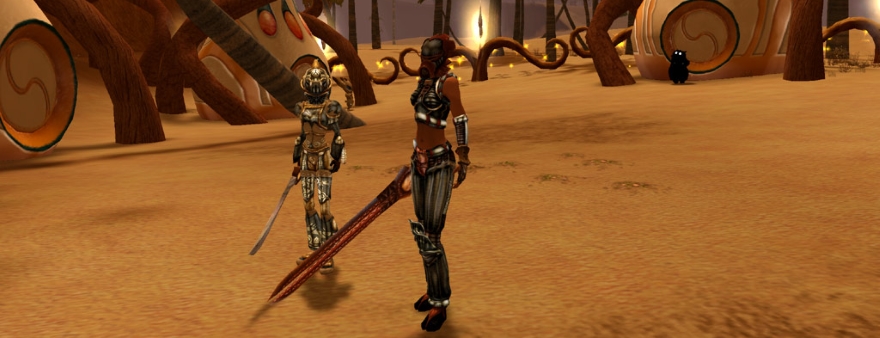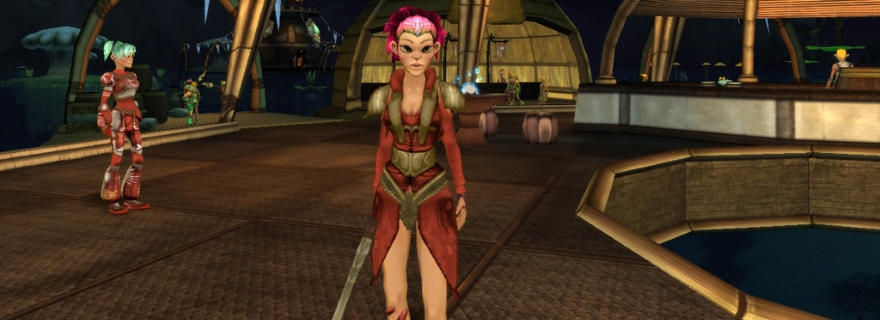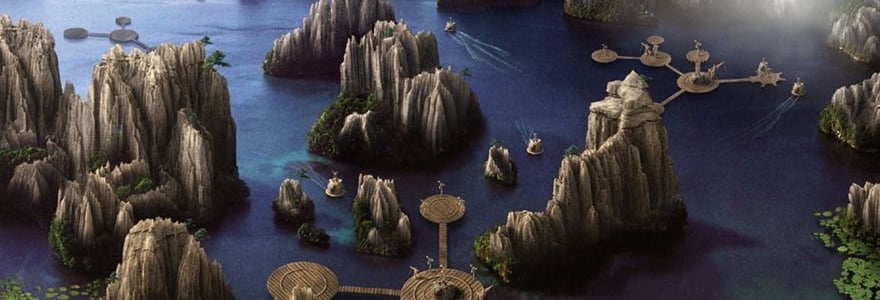
Every so often I get requests to cover such-and-such game in this column. These are often incredibly obscure titles, even to me, and when I get them they go into a queue along with my other wish list topics. One title’s popped up enough in the request space that I knew I had to tackle it before too long, and that game is Saga of Ryzom (or just Ryzom if you’re being informal, and we are).
Ryzom is an incredibly odd sandbox that’s been on my radar for two reasons. The first is that it was a beloved title by one of our former Massively colleagues, and the second is that this game had struggled to survive over the years as it switched hands, business models, and presumably alternate dimensions. In September, the game will have been operating in one form or another for 12 years, which makes it a candidate for investigation.
What is Ryzom, how did it come to be, and can you really own and run a copy of it yourself? We’ll answer these questions and more today!
Creation of a living world
To truly start at the beginning of Ryzom’s story, you have to go back to the founding of French independent game studio Nevrax in 2000. The studio and team came together with an ambitious vision to create a different type of MMORPG from scratch. A pilot game called Snowballs was created that year to show off ideas and tech to investors for the funding that Nevrax desperately needed.
The team of 50 employees continued its work by making its own game engine, NeL (Nevrax Libraries), by 2002. The engine itself was made to be open source, although the game that the studio had in mind was not. This MMO, which would initially be called The Saga of Ryzom, had lofty goals that included the community at every step.
“Ryzom is like a symphony with its three major forces: the composer, the conductor and the orchestra,” said Nevrax CEO David Cohen Corval in 2004. “We (the team that is Nevrax) are the composers (since we imagined, designed and built the game), and we will also share the conductor’s responsibility with the publishers (who will operate the game). The players will be the orchestra who give life to the symphony. Players are therefore not expected to remain a passive audience (with no grip on the world or the ongoing story). On the contrary, Ryzom is an invitation to those who want to plunge themselves deeper into heroic
adventures, and take an active part in a saga designed to be larger than life.”
Player testing in this strange new world commenced in May 2004 with plans to launch the game the following month. However, Nevrax decided to slightly delay the launch until the fall due to tester feedback. Over the summer, 70,000 players would dip into Ryzom to see what it held.
The North American and European launch of Saga of Ryzom went forward in September 2004 — and was largely ignored by most of the gaming community apart from a dedicated player core.
Undeterred by low numbers, Nevrax went ahead with work on the game’s first expansion, The Ryzom Ring, for October 2006. The expansion’s selling feature was a set of tools that allowed players to create and run their own in-game scenarios. In effect, this turned players into classic tabletop dungeon masters.
“Our hope for The Ryzom Ring is that it will bring back the power to the players,” said Corval in 2006. “The Ryzom Ring will empower individuals to create their own adventures and lands and to share them. The only true limitations will be their own imaginations.”
With a name change to Ryzom and plans to eventually branch out into multiple worlds across an alien galaxy, this MMO looked as though it had a clear path to its future. Yet like many plans, these were to be dashed on the rocks of reality.
The sandiest sandbox on the beach
If you can scrounge up a Ryzom fan — and they do exist, I assure you — you’ll soon be assailed by passionate evangelism about what makes this game great. That might seem weird, considering how small a niche it’s occupied, but the feature set doesn’t lie.
Ryzom’s beautiful art style is only the first step into what makes this game fascinating. The concept is that players start out the game as refugees on the planet Atys in the year 2525. As either a member of the Matis, Tryker, Zoraïs, or Fyros race, players would explore this large and dangerous planet (which was really a giant tree in space) and carve out their own destiny.
The game certainly checked off a lot of boxes on the sandbox wish list. There was an incredibly deep harvesting and crafting system, a heavy emphasis on roleplay, deep lore, player housing, GM events, dynamic invasions, and a world that could be shaped and changed based on character actions. Customization extended so far as to allow players to build their own skills out of “bricks” through the Modular Action System. By mix-and-matching different effects and costs, players could create skills to match their gameplay. In fact, Ryzom lacks character levels, preferring instead to give players freedom to grind and and all skills up that they desired.
The world didn’t sit still for player intervention, either. Ryzom featured four seasons and weather patterns that were not only visually cosmetic but had implications on gameplay. The native fauna each had their own special programming that sent them roaming in herds to graze or hunting in packs for unlucky prey.
Open source for an open world
By late 2006, Ryzom was definitely in trouble. The game wasn’t pulling in enough interest and money, and as a result, Nevrax closed up shop and the game went into the possession of a liquidator by November.
The community, rightfully fearful that it was going to lose the MMO for good, launched a “Free Ryzom” campaign to buy the assets and make the game completely free. It was an early example of crowdfunding at work, although unfortunately the campaign fell short of the donations needed to obtain the game.
Happily, Ryzom’s story didn’t end there, although it got pretty crazy. Following the failed campaign, Ryzom’s assets were sold to Gameforge AG in December 2006. The German company created Gameforge France to run Ryzom, a grand venture that lasted less than a year before it went belly-up. Ryzom returned to the liquidator by October 2007 and the game’s closure looked certain.
Another sale, and Ryzom fell into the hands of Cyprus-based Winch Gate. Winch Gate turned the game servers back on in August 2008. A freemium model was later instituted, allowing players to enjoy the game for free, although they couldn’t progress past a level 125 skill cap without subscribing.
Winch Gate made the bold move to fully release the source code of the game in May 2010, making Ryzom one of the very few MMOs that anyone can pick up and operate: “By freeing Ryzom code, Winch Gate is transforming the MMORPG marketplace and is setting a precedent for how gaming software should evolve — in freedom. The source code released totals over two million lines of source code and over 20,000 high quality textures and thousands of 3D objects.”
This meant that while Ryzom would continue to operate as a commercial game, fans had the option to experiment with the open source client, server, and media on the side. There were obvious limitations, such as not allowing the commercial world to be downloaded or unofficial clients connecting to Winch Gate’s servers.
To this day, Winch Gate continues to operate the main Ryzom server. To cut costs and make significant changes to the core game, the company peformed a server merge and full wipe in September 2012. Allegedly, Ryzom had racked up 500,000 players total by 2012, making it not an insignificant game of the past two decades.
Have you played or do you continue to play Ryzom? Let us know your experiences and favorite aspects in the comments!
 Believe it or not, MMOs did exist prior to World of Warcraft! Every two weeks, The Game Archaeologist looks back at classic online games and their history to learn a thing or two about where the industry came from… and where it might be heading.
Believe it or not, MMOs did exist prior to World of Warcraft! Every two weeks, The Game Archaeologist looks back at classic online games and their history to learn a thing or two about where the industry came from… and where it might be heading.

















